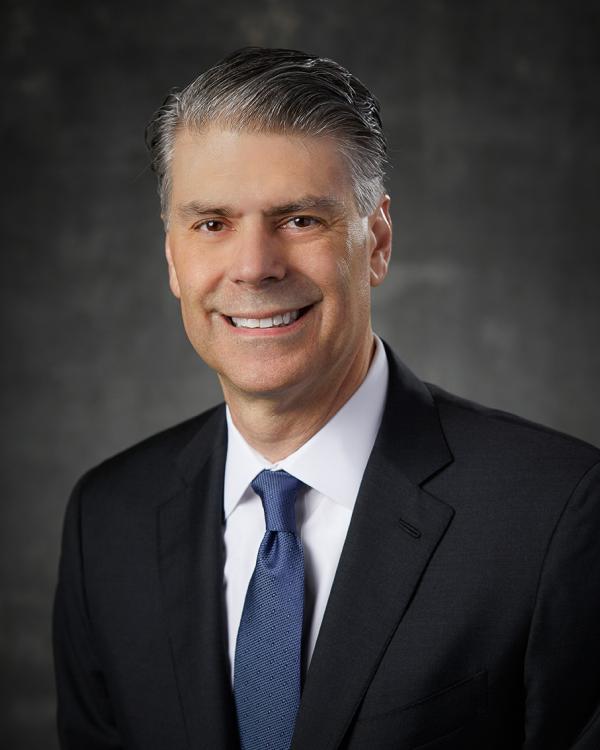ARTICLE SUMMARY:
ICYMI: Joe Almeida on Baxter International’s Product Plans
Introduction
Joe Almeida joined Baxter International as CEO in 2016, shortly after Medtronic merged with his previous company, Covidien. When he came on board, Baxter’s strategy was diffuse. The company had morphed from its hospital supply roots in many different directions, including the 2015 launch of a biotechnology company, Baxalta. The public perception was that Baxter had  lost its way. Enter Almeida, to bring focus to the company and restore its culture of innovation. In the June 28 issue of MedTech Strategist, we published editor-in-chief David Cassak’s wide-ranging interview with Joe Almeida about his plans for reinvigorating Baxter and his thoughts on the general health of the medtech industry. Below is an excerpt of Almeida’s comments on his five-year plan for Baxter’s product portfolio. Read the complete interview in MedTech Strategist: “Charting Baxter’s Rebound: An Interview with CEO Joe Almeida."
lost its way. Enter Almeida, to bring focus to the company and restore its culture of innovation. In the June 28 issue of MedTech Strategist, we published editor-in-chief David Cassak’s wide-ranging interview with Joe Almeida about his plans for reinvigorating Baxter and his thoughts on the general health of the medtech industry. Below is an excerpt of Almeida’s comments on his five-year plan for Baxter’s product portfolio. Read the complete interview in MedTech Strategist: “Charting Baxter’s Rebound: An Interview with CEO Joe Almeida."
The Baxter of the past was an innovative company that invented many different therapies but that, after a while, forgot how to innovate, with an ecosystem of organic innovation that all but disappeared.

Q: One reason Baxter seemed to outsiders to have lost its way lies in the fact that over the past couple of decades, the product portfolio seems to have jumped all over the place. In the 1980s, the company was a hospital supply company, strong in things like IV solutions and blood products. Then for a while the company seemed to toy with being a biotech company. It also was a major hospital supply distributor after its merger with American Hospital Supply. Some of those businesses were spun off, but does any of that still define what Baxter is? What are the key components of Baxter’s product portfolio today? And five years from now do you think the portfolio will look different?
Sometimes I think we senior executives in large companies don’t take enough risk, don’t try hard enough to change our culture.

A: Following the Baxalta spin-off, it was clear that we needed to rebase our organization to reflect the businesses that comprised the new Baxter footprint. This meant fundamentally transforming our cost structure and enhancing our operational efficiency in four key ways:
-
One, a zero-based organization approach, which is all about rightsizing the organization through reduced layers and increased spans;
-
Two, zero-based spending, where we applied a disciplined cost assessment across the business to eliminate waste;
-
Three, portfolio management, which we advanced by optimizing our manufacturing footprint, R&D operations, and supply chain network;
-
Finally, global business services, such that we centralized and streamlined our support functions.
Taken together, these efforts are driving cumulative savings of nearly $1 billion through 2018. And the important thing here is that we can reinvest these savings to drive growth through innovation, both organically and inorganically.
We look slightly different than we did back then. Today we have six global business units. The way it’s organized is very simple. We have general managers who manage those business units across all the geographies of the world. They’re responsible for R&D, innovation, product portfolio and upstream marketing, and product launches. Every region of the world has people who do sales and marketing downstream—that’s pretty straightforward. They intersect in those regions with specific portfolios. The GBUs have the responsibility to create 10-year pipeline portfolios, which also need to have adjacency in the pre-treatment and post-care settings like the home. We have a simple strategy about where to play and how to play. All that will drive product development.
The main focus of our portfolio development efforts is going to be on medication delivery and management.
We have a new set of infusion pumps being launched this year and in 2020—brand new, very intelligent devices. You’re going to see some monitoring products because we are in the IV space and are an ICU company as well. Another area of focus is injectable drugs, premixed or in powder form. We have operations in India, in Germany and in the US that will be working on that. We just closed the acquisition of two hemostat and sealant products from Mallinckrodt that will go right into the bag of our Advanced Surgery sales team. And lastly, we’re going to put quite a bit of emphasis on acute renal care, which links with medication management in the ICU, and again on our Advanced Surgery group, which also has more great products coming.
I believe you drive M&A from your strategy, not from being opportunistic. So, looking at our portfolio today, I do think it will look different [in five years]. You’ll see us with many more cytotoxic injectables than we’ve had in the past. You will see us getting more into the ICU and critical care spaces and expanding in renal care with point-of-care at home for peritoneal dialysis and in countries like Indonesia where we’re working with the government to establish renal clinics and other care settings. You’ll see us getting into other areas of care, areas that were not traditionally in the original portfolio of Baxter.
Read the complete interview in the June 27th Issue of MedTech Strategist
“Charting Baxter’s Rebound: An Interview with CEO Joe Almeida"
#MedicalDevice #CommunityBlog #strategy #medtech #medicaldevices #DavidCassak #interview #trends #Baxter #JoeAlmeida #ICYMI #perspective #MedTechStrategist #BaxterIntl #global
![]() Trial MyStrategist.com and unlock 7-days of exclusive subscriber-only access to the medical device industry's most trusted strategic publications: MedTech Strategist & Market Pathways. For more information on our demographics and current readership click here.
Trial MyStrategist.com and unlock 7-days of exclusive subscriber-only access to the medical device industry's most trusted strategic publications: MedTech Strategist & Market Pathways. For more information on our demographics and current readership click here.
